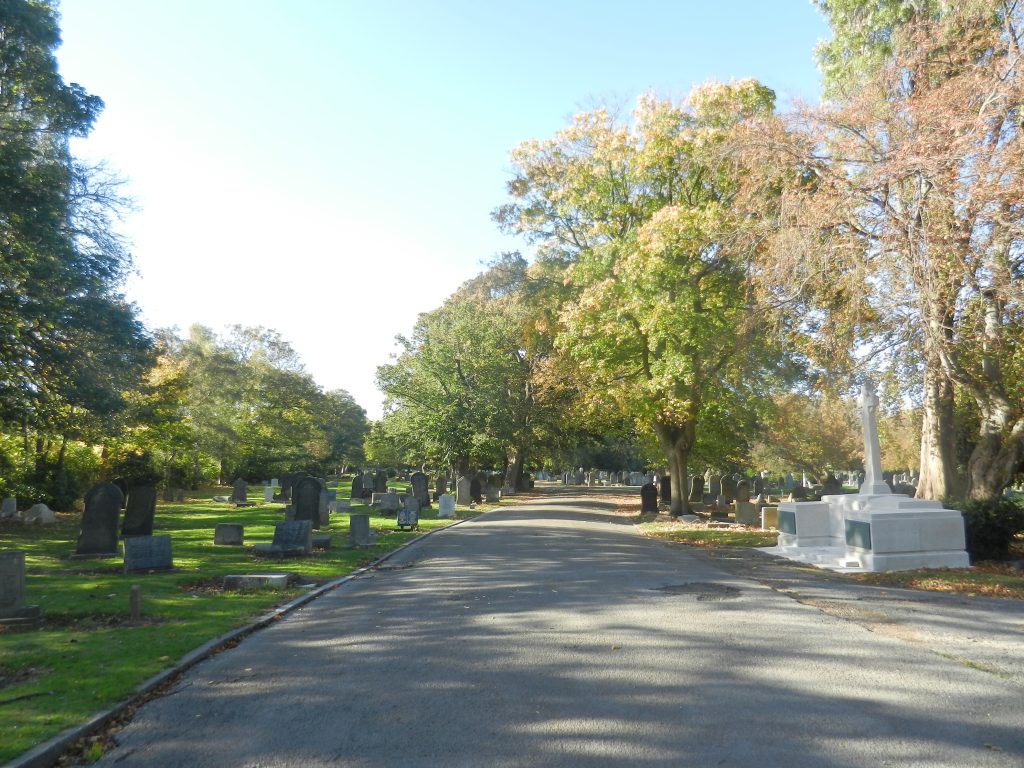
Although not as clear an example of an avenue (s.p.b.s) this scene from Western Cemetery, Hull shows that the planners of early municipal cemeteries were driven by some of the same principals as in municipal parks, in particular, the value of diverse species of deciduous trees incorporated into the planning. This was more of an initiative than was the case in municipal parks as they had been influenced by trends in the design of earlier private parks (as previously stated). Churchyards, the ‘ancestors’ of municipal cemeteries, had not been characterised by tree planting except for the sombre avenues of yew trees/bushes sometimes planted beside the path between the lichgate and the church’s south or north door. That said, the era of private cemeteries in the early to mid 19th century had incorporated tree planting in their lay-out plan, Hull General Cemetery being a particularly good surviving example; so this would have been a precedent for municipal authorities to follow.
Tree roots and graves are awkward bedfellows, the former making the job of grave digging much more difficult, while in turn the digging must damage the tree’s welfare. I’m not aware of any guidelines related to this in the early days of municipal or private cemeteries, but then in the early days the tree root-systems of the young trees would not have been so extensive.
As shown above the edges of carriageways in early municipal cemeteries were not necessarily seen as opportunities for tree planting because the grave plots immediately beside the carriageway commanded the highest purchase price, this because of their convenient location and ‘show-off’ value next to where the living walked. Records show that in Hedon Road cemetery there were three cost-of-grave plot levels, these determined by the distance from the carriage or pathway.